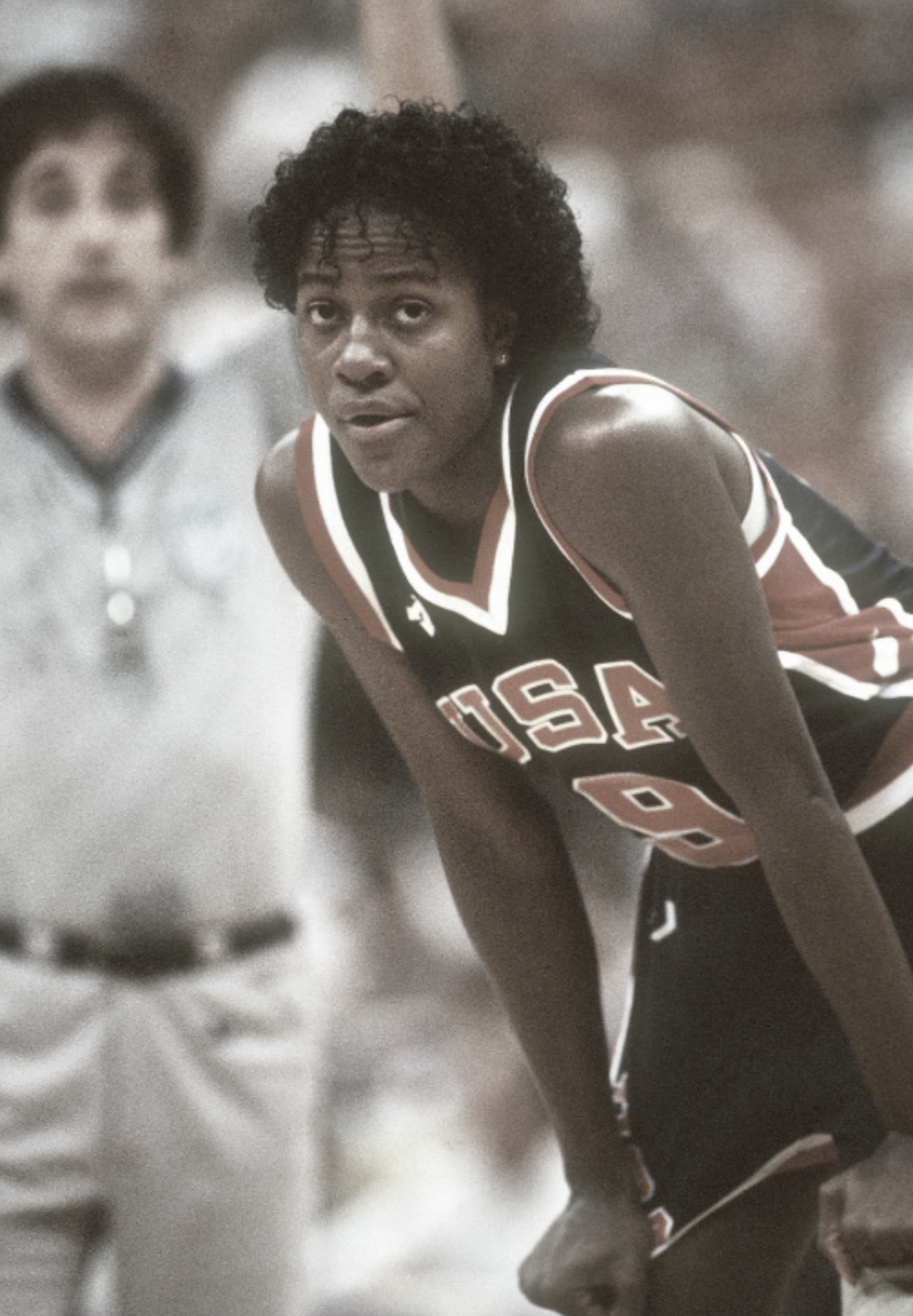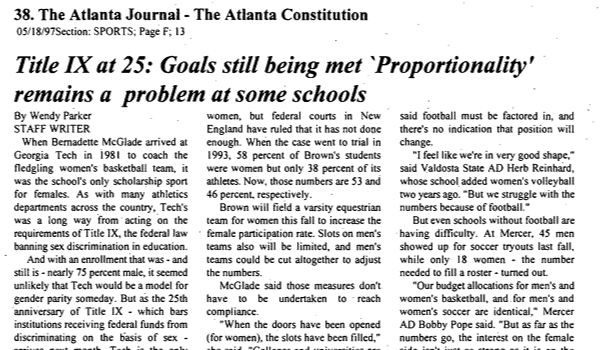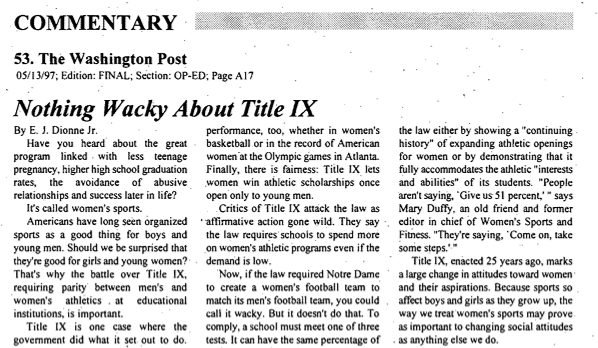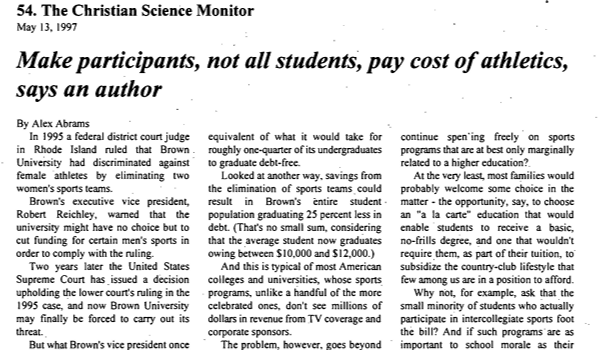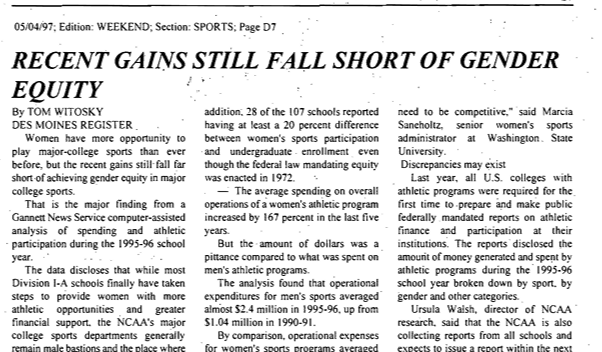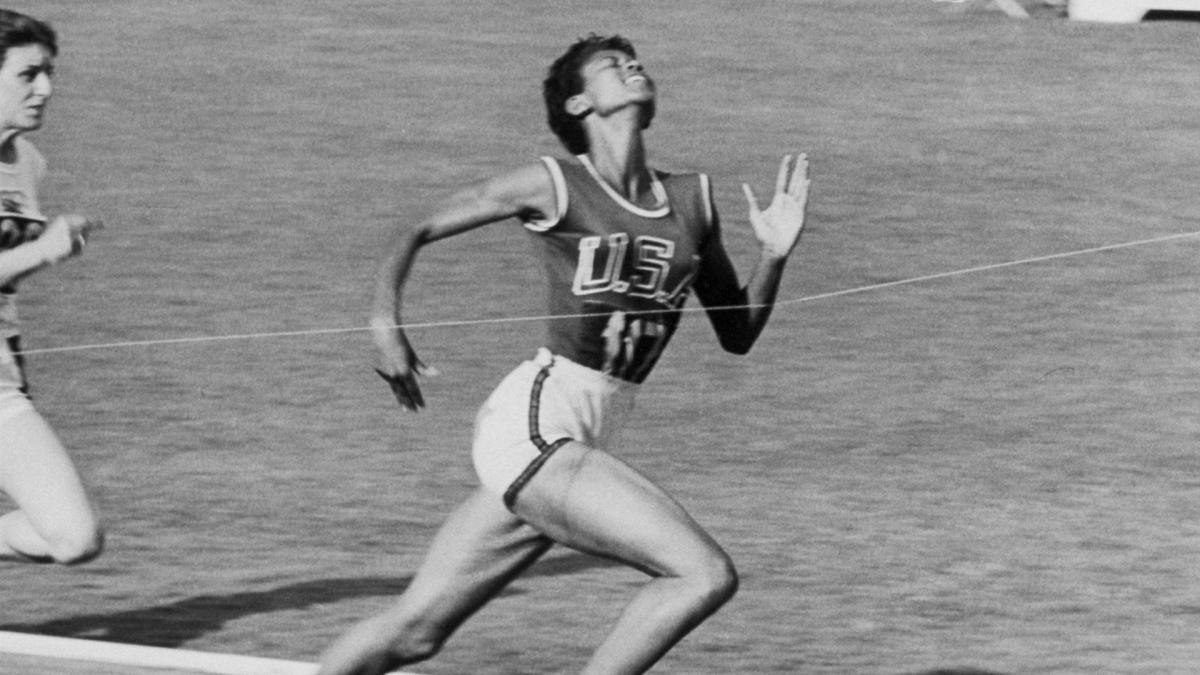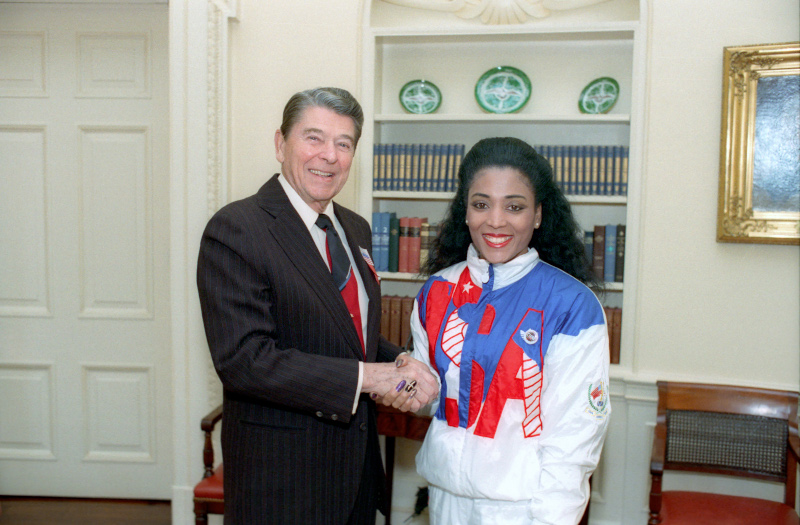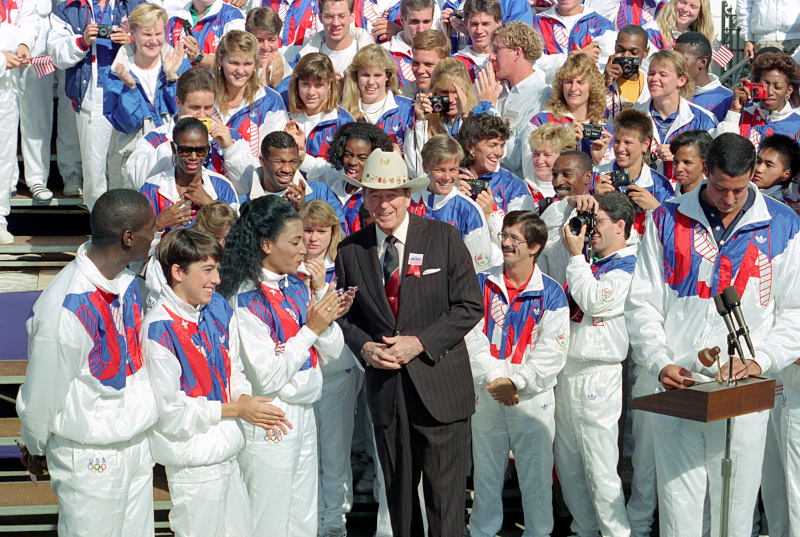Archives Experience Newsletter - June 21, 2022
An Equal Playing Field
A year ago, the NCAA got into some hot water during March Madness when pictures surfaced that compared the women’s basketball tournament weight room with the men’s equipment room. There was no comparison or decent explanations for how this came to be. Perception was reality – the women’s weight room came up light.
Forty-nine years after the passage of Title IX, inequity still was rearing its head.
In 1972, President Nixon reauthorized the Higher Education Amendments, but one amendment in particular – Title IX – had a greater impact than others, so much so that it’s often mistaken for standalone legislation.
Funding for girls’ and women’s sports used to be an exception, not the rule. Boys’ and men’s teams received ample funding for equipment, uniforms, and travel. Girls’ teams got the leftovers, if there were any. Fundraising efforts for program travel and hand-me-downs of used boys’ equipment were the norm.
Title IX mandated equal funding for women’s educations and opened the world of sports to women, and they’ve never looked back. As Title IX turns fifty, join us as we celebrate its legacy of advancing gender equity TONIGHT at our virtual program.

Patrick Madden
Executive Director
National Archives Foundation
Entitled to Play
On June 23, 1972, the Education Amendments of 1972 (Public Law No. 92-318, 86 Stat. 235) became law in the United States. Its Title IX provision prohibits discrimination on the basis of sex in educational institutions that receive federal aid, whether directly or indirectly.
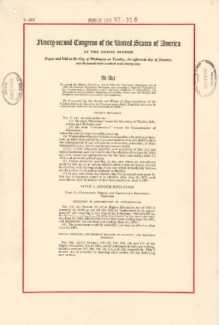
TITLE IX legislation
National Archives Identifier: 7455551
The Education Amendments Act is a federal civil rights law sponsored by House of Representatives Patsy T. Mink (Hawaii-Democrat) and Senator Birch Bayh (Indiana-Democrat). When he introduced the bill on the Senate floor on February 28, 1972, Bayh said, “We are all familiar with the stereotype [that] women [are] pretty things who go to college to find a husband, [and who] go on to graduate school because they want a more interesting husband, and finally marry, have children, and never work again. The desire of many schools not to waste a ‘man’s place’ on a woman stems from such stereotyped notions. But the facts contradict these myths about the ‘weaker sex’ and it is time to change our operating assumptions.”
Title IX was not written specifically to protect the funding of women’s sports at the college level, but its most dramatic and public effects have been evident in the number of female college athletes in the fifty years since it became law. In 2006, a study revealed that since Title IX became law in 1972, the number of women participating in sports at the high-school level had increased by a factor of nine, and the number of female college athletes had increased by more than 450%.

Secretary Mel Martinez with Congresswoman Patsy Mink
National Archives Identifier: 6179790
Patsy Takemoto Mink was the first woman of color elected to Congress. She was a third-generation descendant of Japanese emigrants who was born in Hawaii when it was still a territory. Throughout her education and early career, she experienced racial and sexual discrimination that prevented her from getting into medical school and later from being hired by major law firms because she was married and had a child. In 1965, she was elected to represent Hawaii in the House of Representatives, in which she served until 1975. Consequently, she was active in supporting the Great Society legislation, of which the Education Amendments of 1972 was a part. In 1990, she was again elected to the House of Representatives, in which she served until her death in 2002. After her passing, Title IX was renamed the Patsy T. Mink Equal Opportunity in Education Act in her honor.
To view the full text of a document, click on the document when it’s the main image above
Listen to “Face Off’ Title IX episode
Source: Kennedy Library
Black Women Shine
Since the passage of Title IX, the number of women participating in sports at both the high school and college level has expanded exponentially. Female athletes of color in particular have benefited from the enforcement of Title IX. “Race and Sport,” a report by the Women’s Sports Foundation, noted that according to an NCAA study, “black female student-athletes in NCAA Division I are graduating at a far higher rate (59%) than black females in the general student body (42%). . . . Since the passage of Title IX, athletic opportunities for female athletes of color have grown at double the rate of those for white female athletes. At the college level, for female athletes of color, there was a 955% increase in participation opportunities from 1971 to 2000 (2,137 to 22,541 participants, respectively). For white female athletes, there was a 320% increase in participation (27,840 to 116,918, respectively). Scholarship assistance for female athletes of color has increased by 820% (from $100,000 to more than $82 million), while white females receive over $300 million in scholarship assistance.”
Prior to the passage of Title IX, black female superstars like Wilma Rudolph were few and far between. The implementation of the civil rights law has made it possible for more black female athletes to not only participate, but also to perform at the elite level.
Althea Gibson winning the World Championship
(8 minutes 35 seconds)
Source: NARA YouTube Channel
A Towering Threat
The origin of the idea that Title IX was intended to protect women’s collegiate sports from discrimination may have arisen from the fact that while the legislation was being debated, Congressman John Tower (R-TX) proposed an amendment that would have exempted athletic departments from having to comply with it. The amendment failed, but the connection between Title IX and sports had been made for good in the public psyche.
Congressman Tower wasn’t done yet. In 1974, he proposed another amendment that would have exempted collegiate sports that generated revenue from conforming to Title IX. That amendment also failed.
In 1984, the Supreme Court ruled in Grove City College v. Bell that colleges receiving indirect federal funding were not required to comply with Title IX. In response, the U.S. Congress passed the Civil Rights Restoration Act of 1987, which states that colleges that receive any federal aid, whether direct or indirect, have to comply with Title IX.
Letter to Congress re: the Civil Rights Restoration Act
Source: Reagan Library
President Ronald Reagan was adamantly opposed to the Civil Rights Restoration Act, stating that it “would diminish substantially the freedom and independence of religious institutions in our society” and threatening to veto it if it was passed. Congress did in fact pass it, and the President did in fact veto it, but Congress overrode his veto and the bill became law.

Anything You Can Do…
With the passage of Title IX, girls were increasingly given the opportunity to play soccer in grade school and high school. The film Soccer USA, in the holdings of the National Archives, documents the growth in the popularity of the game among school-aged girls in the United States and their growing confidence in their ability to play it well. This film was made in 1980, eight years after Title IX became law. Without it, whether they would have enjoyed this chance is doubtful. In one interview, the girls were asked if they could play as well as the boys, and they answered with a resounding “YES!”
Coach from Pelé’s soccer clinic, Soccer USA
(1 minute)
National Archives Identifier: 77180359
Achieving Your Goals
The members of the United States Women’s National Soccer Team (USWNT) are walking testaments to the success of Title IX. The Fédération Internationale de Football Association (FIFA), which established rankings in women’s soccer in 2003, ranked the USWNT second in the world from 2003 to 2008 and first in the world from March 2008 to November 2014. The team has won four Olympic gold medals (1996, 2004, 2008, and 2012), eight CONCACAF Gold Cups, and four Women’s World Cup titles (1991, 1999, 2015, and 2019).
None of this would have been possible without the passage of Title IX.
| Women Soccer Team USA Celebrate Together | ||
|---|---|---|
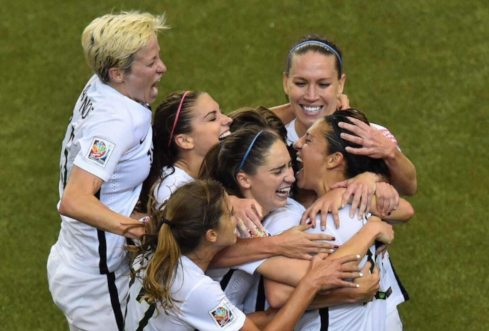 National Archives Identifier: 219775425 |
 National Archives Identifier: 219775427 |
 National Archives Identifier: 219775429 |

